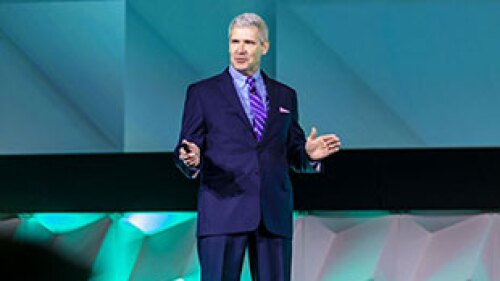At ULI’s 2011 Fall Meeting in Los Angeles, a lively panel of homebuilder executives shared their insights on the challenges and rewards of working in today’s economic climate. Eschewing the doom and gloom, they shared areas in which they are finding success. Moderated by Richard Gollis, principal at the Concord Group, LLC, the panel included Jeff Mezger, CEO of KB Home Corporation; Bert Selva, president and CEO of Shea Homes; and H. Lawrence Webb, CEO of the New Home Company.
Mezger noted that he sees more stability in markets today—they’re no longer getting worse. He also said that KB Homes is trying to right-size the company, lower inventory, and retool the company’s product line to today’s value-oriented consumer. KB is repositioning its lot portfolio to emphasize markets that are more balanced, especially coastal California and Texas. Mezger believes these markets will return sooner than many others.
Selva disclosed that Shea Homes is buying more land, focusing on core markets—those where the company has performed well in the past. Shea is targeting buyers in the 25-to-40-year-old segment, as well as the 55 and older market. For larger deals, the firm seeks joint ventures, while smaller deals are done with its own cash.
Webb represents the New Home Company, which he described as a startup. The firm began in 2009, in the middle of the Great Recession. He said that there is a lot of opportunity for a firm like his that has no legacy assets. His firm operates only in California and competes in land-constrained, high-barrier-to-entry-markets where builders are rewarded for high-quality architecture and design.
Mezger noted that in the last 90 days, he has started ten new projects, which are all small properties in good markets. They work well enough that they’ll likely be done in a year, he added. Housing is a local business, and success depends on the local team and their expertise. Selva agreed, saying, “We’re really conscious of who we hire.”
Webb added that being well capitalized is key. “Those with cash will have incredible opportunities.” Understanding one’s market is also very important. Webb noted that homebuilders are the only retailer with such a high-priced product. Yet, many of them fail to study the market as carefully as some other retailers do. He said he believes that an honest market study is so important to success, but it can be hard to come by.
Selva agreed that understanding the consumer is important. “If you’re going to sell land to a builder, you need to understand the end consumer.” Today’s consumers want certain community amenities, such as trails and open space, while golf courses have lost favor. Also, too many analysts look at “what was and predict a straight line. The one thing we know is that it won’t be a straight line.” Mezger pointed out that changing consumer demands pose other risks. Land previously entitled for a plan that consumers no longer want must be replanned to meet today’s needs. Will the locality allow changes to the plan to meet the current market?
Homebuilders must still deal with consumer fear. Many potential buyers are not in the market now because they fear not qualifying for a loan. They also fear buying a home that may go down in price—or value—after they buy. But most of all, they fear their own situation. Will they still have a job? Another concern for builders is the inventory of foreclosed homes that compete with new product. But Mezger said that he is not concerned about competition from foreclosures, which represent a different product and different buyer than KB is going after. Most foreclosure buyers are investors looking to flip property. But there is still real demand from the homebuyer who doesn’t want to deal with the foreclosure process. Competing with the rental market is not a concern either. “We’re not competing for those who want to live in a two-bedroom, 1,000-square-foot unit,” said Mezger. Further, homeownership is still affordable compared with renting. “In 80 percent of our subdivisions, out-of-pocket costs for ownership [are] less than [the cost of] renting in the same market.”
A bright spot is the new, more energy-efficient products in today’s market. KB, for instance, has been very aggressive with its green homes. Since 2007, the firm has invested heavily in energy efficiency and today is selling net-zero homes. While others say that solar technology is too expensive, 70 percent of KB’s homes today are solar. These homes can promise monthly heating bills of about $35 compared to a 40-year-old home of similar size that costs $600 per month to heat and cool.


